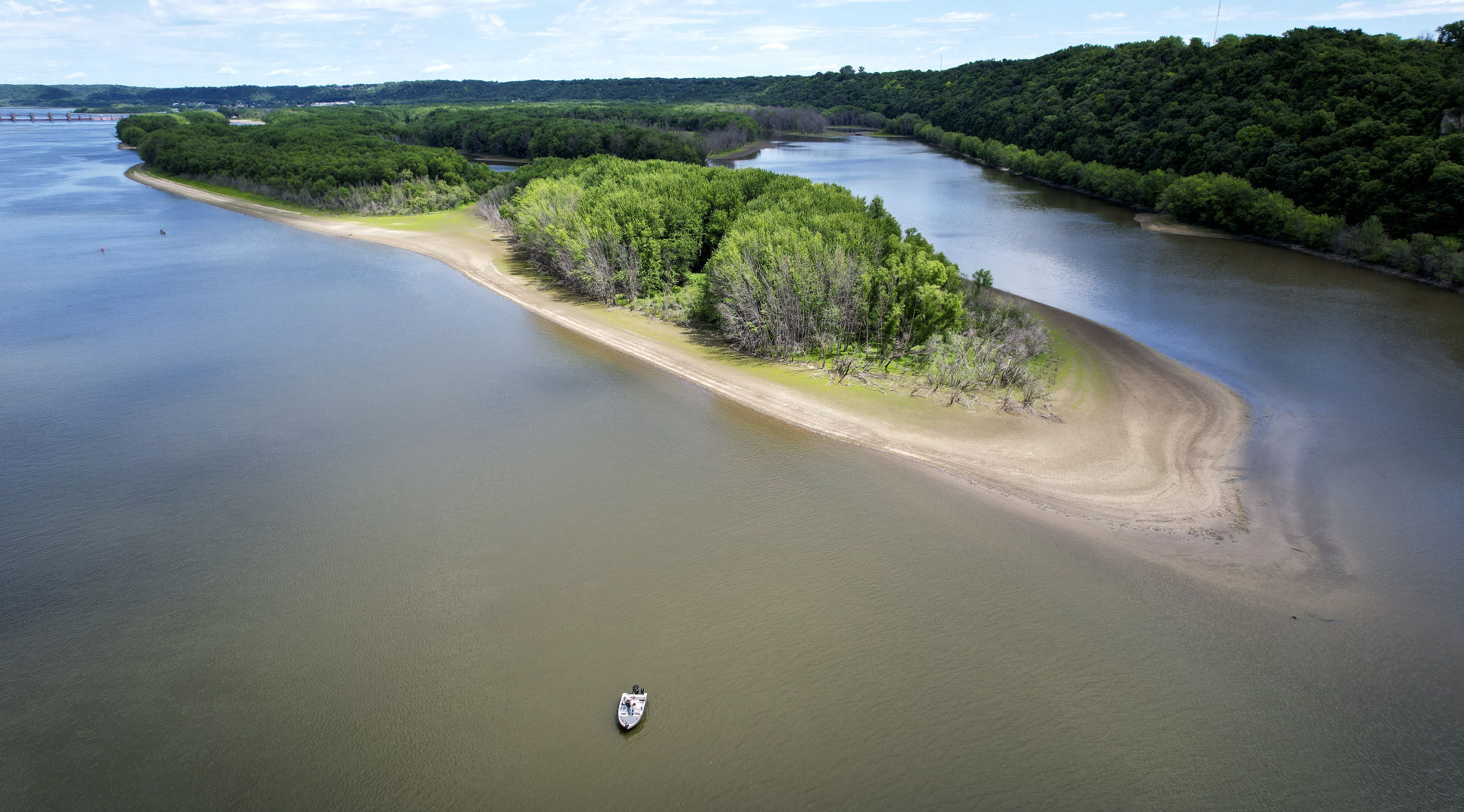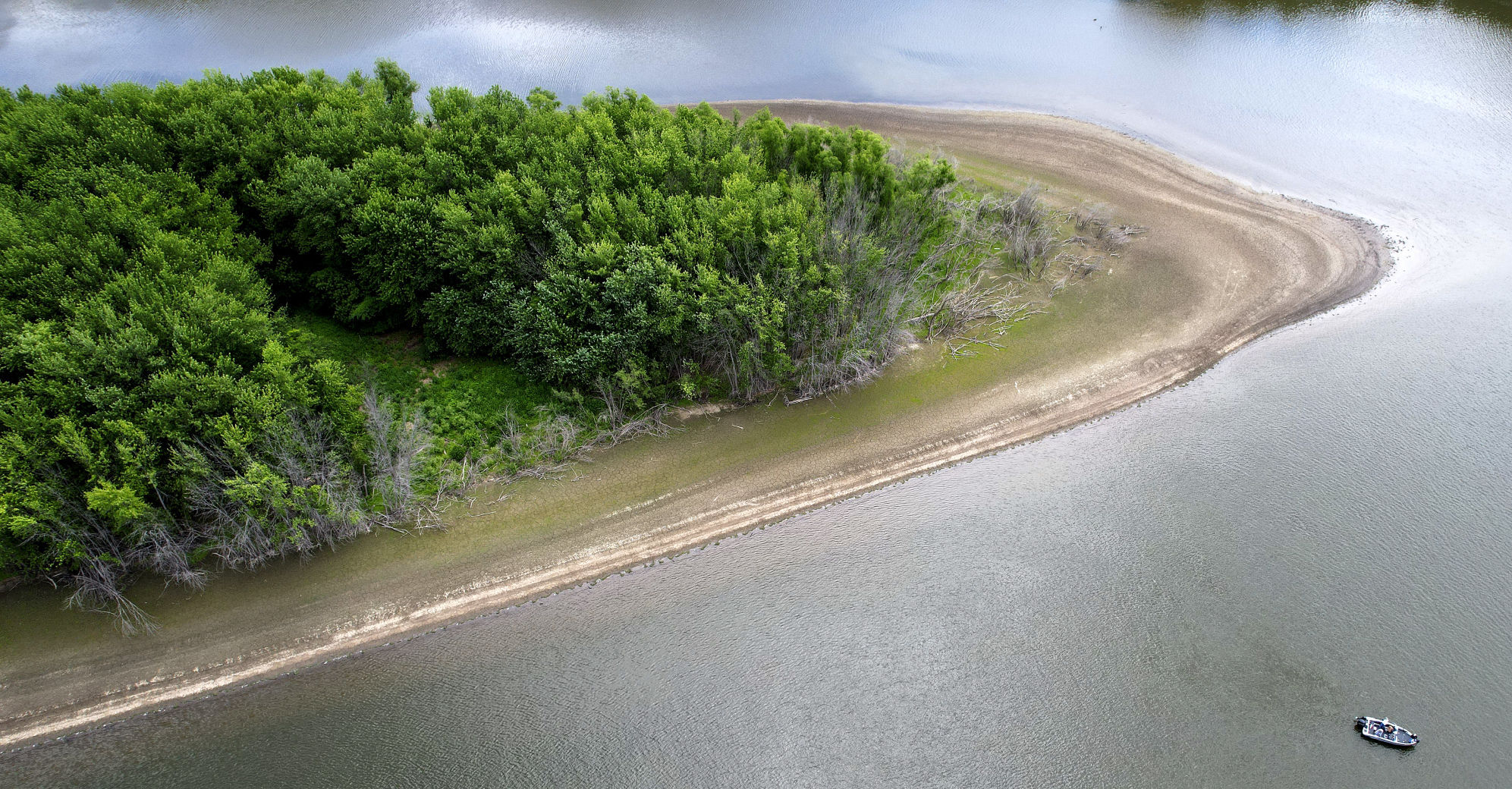When Rod and Pat Stalker, of Texas, brought their boat up the Mississippi River for a summer on the water, they didn’t intend to spend their days on the docks.
But recent dry conditions have caused local Mississippi River levels to drop to their lowest in more than eight years, and the couple has been forced to keep their 45-foot Carver yacht docked at the Dubuque Marina.
The boat needs at least 3.5 feet of water to safely navigate, and the Stalkers said water levels in the inlet connecting the marina to the main channel are between 1.5 and 2 feet.
“Everyone here has been basically locked into the marina for the last two to three weeks,” Rod said. “We went out a couple weeks ago and we were churning mud, so we decided not to go. Most people are choosing not to go out to avoid thousands of dollars of damage to the bottom of the boat.”
As of 2:30 p.m. Thursday, the Mississippi River level at Dubuque was 7.55 feet, according to data from the National Weather Service.
By July 1, the weather service predicts the water level could drop to 7.4 feet. However, the agency’s predictions only take into account precipitation expected about 24 hours into the future from forecast time, so predicted rain over the next week could alter those levels.
“Any rain we get will likely bump the river up some,” said Chris Trefry, chief of the water management section for the U.S. Army Corps of Engineers Rock Island District. “A couple inches will see a rise for sure.”
Trefry said the last time the river at the Dubuque gauge was this low was August and September 2012, when water levels dipped below 7 feet.
However, he said the last time the river was this low at this time of year was 1988, a historic Midwest drought year.
“It was pretty low at the end of May and June (1988), just like we are right now,” he said. “Looking back then, it actually stayed this low until the spring of 1989. We’re not there yet, (and) if we get this rain, then that’s definitely going to turn things around.”
Lock and Dam No. 11 in Dubuque measured the river stage at 4.9 feet as of noon Thursday. This does not mean the water was actually 4.9 feet deep — each lock’s stage measurements are arbitrary numbers determined years ago to bring the lock to a certain elevation, according to Trefry.
Lockmaster Gary Kilburg said the lock recorded its lowest stage measurement of the summer on Friday, June 18, when the gage hit 4.63 feet. He said such readings are atypical for June.
“It’s pretty unusual to get down that low,” he said. “Typically, we get down in the fours during the winter and sometimes in August. It’s a little more unusual to be there this early in the year.”
Jeremy McDowell, who owns Midtown Marina in East Dubuque, Ill., said some of his customers have been forced to pull their boats out of the marina and store them on trailers to avoid damage to the boat as the water sinks lower.
“When you get down to that 7-foot level, everyone’s in trouble here,” he said. “We got close there last week — we were down to 7 feet, 3 inches or 7 feet, 2 inches — so we’re definitely paying attention.”
He said Midtown Marina officials currently are dredging their harbor, a project they already planned to tackle this spring but which has now taken on a new urgency.
The Port of Dubuque Marina is particularly deep and has largely avoided the issues experienced by other marinas, according to dock attendant Madeline Luber.
She said the Port is now welcoming larger boats that cannot safely dock in their typical locations.
“We pay attention to (lower water levels) because we’re going to have more people coming to us and more traffic because other marinas aren’t able to get these boats in and out,” she said.
One new visitor to the Port of Dubuque is the American Lady cruise ship, which typically docks in the Dubuque Yacht Basin by Catfish Charlie’s. Luber said the 135-passenger yacht has been coming to the port for about a week to refuel.
Representatives from American Lady Cruises did not return requests for comment.
Kilburg said the low water levels are particularly concerning for boaters after several years of high water.
“The biggest issue is the water has been predominantly high over the last few years, so it was probably depositing material in places that people didn’t realize until the water dropped out,” he said.
He explained that boaters may return to a spot they usually navigate with no difficulty and be taken by surprise when they run aground on previously-hidden sandbars.
“Every time you go down to the dock, that’s what everybody talks about,” Luber said. “It’s the topic of conversation, just how different the river is now and how to navigate it differently.”




